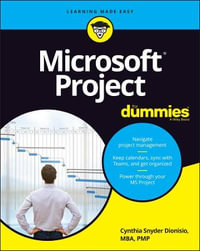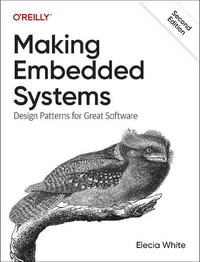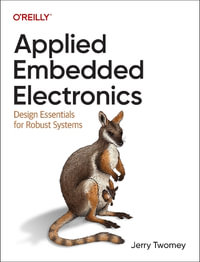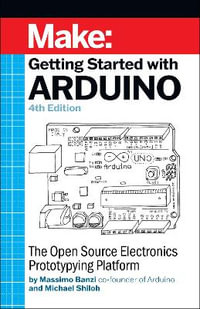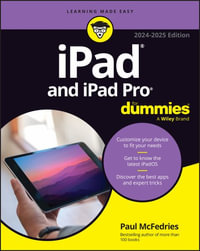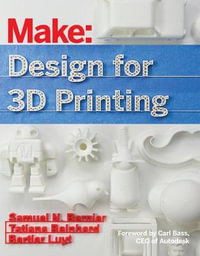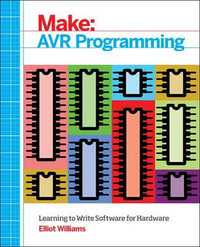| The History and Future of Stiquito: A Hexapod Insectoid Robot | p. 1 |
| Introduction | p. 1 |
| The Origins of Stiquito | p. 1 |
| Engineering a Commercial Stiquito | p. 3 |
| How the Stiquito Insect Walks | p. 4 |
| Microprocessor Control and Stiquito Controlled | p. 7 |
| The Extended Analog Computer as a Biologically Based Stiquito Controller | p. 9 |
| Description of the Extended Analog Computer (EAC) | p. 9 |
| The EAC as Neuromorphic Hybrid Device | p. 10 |
| A Proprioceptic Nervous System Model | p. 11 |
| EAC as an Analog Nervous System for Stiquito | p. 11 |
| The Sessile Stiquito Colony | p. 13 |
| The Failure of Indiana University's Hexapod Stiquito Colony | p. 13 |
| Moving Data, Sessile Robots, Robot Sex | p. 15 |
| The Evolution of the Colony | p. 15 |
| Extinction? | p. 17 |
| Educational Uses of Stiquito | p. 17 |
| The Future of Stiquito | p. 18 |
| References | p. 19 |
| Learning Legged Locomotion | p. 21 |
| Introduction | p. 21 |
| Learning from Delayed Reward | p. 22 |
| One-legged Hopping Robot | p. 22 |
| Learning to Hop Over Rough Terrain | p. 24 |
| Learning from Implicit Reward | p. 26 |
| Four-legged Running Robot | p. 27 |
| Learning to Follow an Object | p. 28 |
| Conclusion | p. 31 |
| References | p. 32 |
| Salamandra Robotica: A Biologically Inspired Amphibious Robot that Swims and Walks | p. 35 |
| Introduction | p. 35 |
| Robots as Tools for Biology | p. 36 |
| Related Work | p. 37 |
| Central Pattern Generator Model | p. 38 |
| Robot's Design | p. 44 |
| First Prototype | p. 44 |
| Body Elements | p. 44 |
| Limb Elements | p. 46 |
| Design Problems | p. 47 |
| Hardware | p. 47 |
| Body Elements | p. 48 |
| Limb Elements | p. 52 |
| Locomotion Controller Circuit | p. 53 |
| Experiments | p. 54 |
| Speed as Function of Drive | p. 54 |
| Kinematic Measurements | p. 55 |
| Future Work | p. 60 |
| Conclusion | p. 61 |
| Realization of an Amphibious Salamander Robot | p. 61 |
| Central Pattern Generators in Robots | p. 62 |
| Contributions to Biology | p. 62 |
| References | p. 63 |
| Multilocomotion Robot: Novel Concept, Mechanism, and Control of Bio-inspired Robot | p. 65 |
| Introduction | p. 65 |
| Multilocomotion Robot | p. 66 |
| Diversity of Locomotion in Animals | p. 66 |
| Multilocomotion Robot | p. 68 |
| Gorilla Robot | p. 71 |
| Gorilla Robot I | p. 72 |
| Gorilla Robot II | p. 73 |
| Gorilla Robot III | p. 74 |
| Evaluation of the Gorilla Robot on Slopes as Quadruped Hardware | p. 75 |
| Evaluation of Joint Torque in Quadruped Walk on a Slope | p. 75 |
| Simulation Analysis | p. 78 |
| Experiment | p. 81 |
| Discussion | p. 82 |
| Previous Works Using the Gorilla Robot | p. 82 |
| Summary | p. 84 |
| References | p. 85 |
| Self-regulatory Hardware: Evolutionary Design for Mechanical Passivity on a Pseudo Passive Dynamic Walker | p. 87 |
| Introduction | p. 87 |
| Background | p. 88 |
| Evolutionary Design System of Legged Robots | p. 89 |
| Three-dimensional Physics World | p. 89 |
| Coupled Evolution Part | p. 90 |
| Evaluation Methods | p. 91 |
| Evolutionary Design of Biped Robots | p. 92 |
| Morphological and Control Configuration for Biped Robots | p. 92 |
| Results of First Evolutionary Design | p. 93 |
| Additional Setup Condition for the Second Evolutionary Design | p. 96 |
| Results of the Second Evolutionary Design | p. 97 |
| Development of a Novel Pseudo Passive Dynamic Walker | p. 100 |
| Conclusion | p. 101 |
| References | p. 102 |
| Perception for Action in Roving Robots: A Dynamical System Approach | p. 103 |
| Introduction | p. 103 |
| Control Architecture | p. 105 |
| Perceptual System | p. 106 |
| Action Selection Layer | p. 110 |
| Hardware Devices | p. 113 |
| Spark Main Board | p. 114 |
| Rover II | p. 115 |
| Hardware Implementation | p. 117 |
| Experiments | p. 122 |
| Experimental Setup | p. 123 |
| Experimental Results | p. 124 |
| Summary and Remarks | p. 129 |
| Conclusion | p. 130 |
| References | p. 130 |
| Nature-inspired Single-electron Computers | p. 133 |
| Introduction | p. 133 |
| A Single-electron Reaction-diffusion Device for Computation of a Voronoi Diagram | p. 134 |
| Neuronal Synchrony Detection on Single-electron Neural Networks | p. 140 |
| Stochastic Resonance Among Single-Electron Neurons on Schottky Wrap-Gate Devices | p. 150 |
| Single-electron Circuits Performing Dendritic Pattern Formation with Nature-inspired Cellular Automata | p. 151 |
| Summary and Future Works | p. 155 |
| References | p. 157 |
| Tribolon: Water-Based Self-Assembly Robots | p. 161 |
| Introduction | p. 161 |
| Self-Assembly Robots | p. 162 |
| The "ABC Problem" | p. 164 |
| Tribolon: Water-Based Self-Assembly Robots | p. 164 |
| Passive Tile Model | p. 165 |
| Self-propelled Model: Tiles with Vibration Motors | p. 167 |
| Connectable Model: with Peltier Connector | p. 175 |
| Scale-Free Self-Assembly: Size Matters | p. 180 |
| Speculations About Life | p. 181 |
| References | p. 182 |
| Artificial Symbiosis in EcoBots | p. 185 |
| Introduction | p. 185 |
| Artificial Symbiosis | p. 187 |
| Microbial Fuel Cells | p. 188 |
| Materials and Methods | p. 190 |
| MFC Setup for Robot Runs | p. 190 |
| Robot Design and Principle of Operation | p. 191 |
| Experimental Setup | p. 196 |
| Results | p. 198 |
| EcoBot-I | p. 198 |
| EcoBot-II | p. 201 |
| Discussion | p. 205 |
| Conclusions | p. 209 |
| References | p. 210 |
| The Phi-Bot: A Robot Controlled by a Slime Mould | p. 213 |
| Introduction | p. 213 |
| Physarum Polycephalum as Information Processor | p. 214 |
| Cellular Robot Control | p. 215 |
| The First Generation of the ¿-bot: Tethered Robot Design | p. 215 |
| The Second Generation of the ¿-bot: On-Board Cellular Controller | p. 219 |
| Computation, Control, and Coordination in the ¿-Bot: Material for a Theory of Bounded Computability | p. 223 |
| Computation and the Syntactic Efficiency and Reliability of Computational Media | p. 225 |
| Control and the Semantic Generality of Computational Media | p. 226 |
| Coordination and the Pragmatic Versatility of Computational Media | p. 227 |
| Conclusion | p. 230 |
| References | p. 231 |
| Reaction-Diffusion Controllers for Robots | p. 233 |
| Introduction | p. 233 |
| BZ Medium | p. 236 |
| Robot Taxis | p. 236 |
| Open-Loop Parallel Actuators | p. 242 |
| Closed-Loop Control of Robotic Hand | p. 251 |
| Physarum Robots | p. 255 |
| Conclusion | p. 260 |
| References | p. 263 |
| Index | p. 265 |
| Table of Contents provided by Ingram. All Rights Reserved. |







